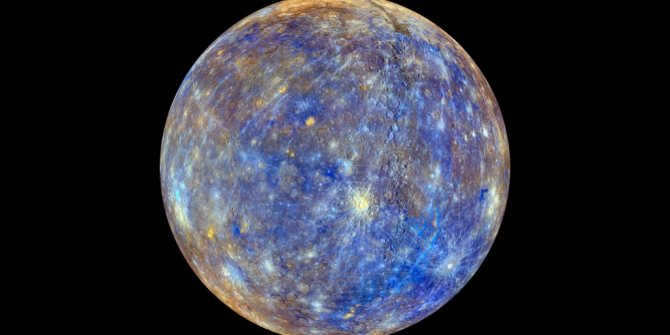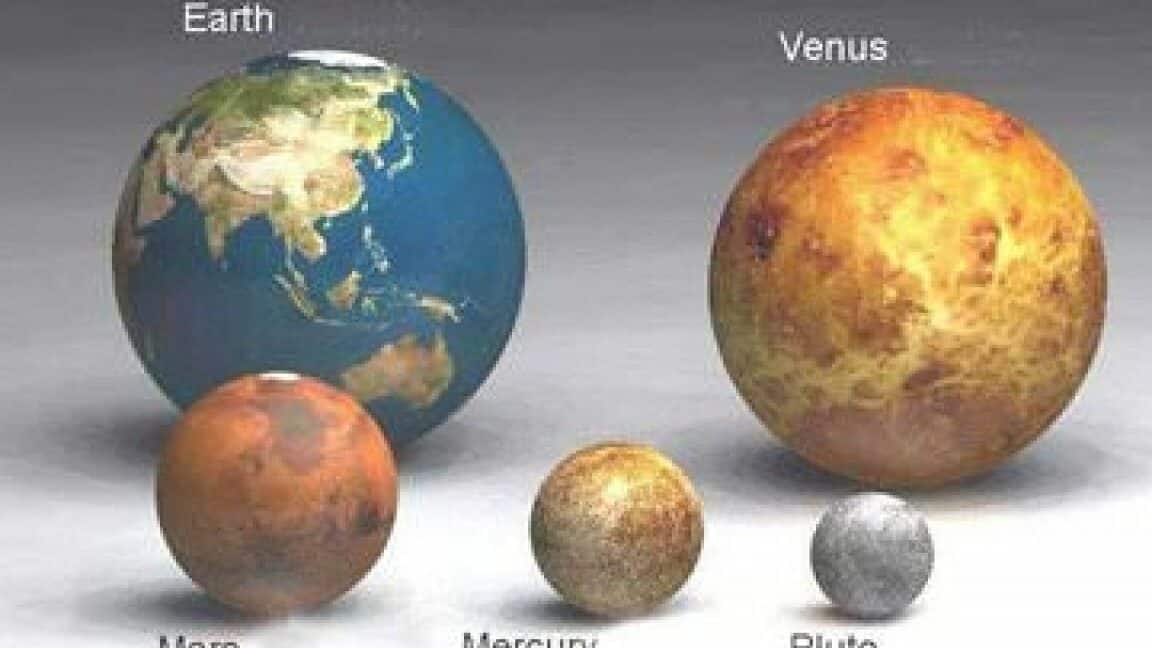Mars and Venus are the two planets that resemble Earth the most. Both can be seen without a telescope and are among the brightest objects in the night sky.
Venus is located at an average distance of just 108 million kilometers from the Sun, whereas Mars is much farther away at 228 million kilometers. Venus gets as close as 38 million kilometers to Earth, while Mars comes within 55.7 million kilometers.
Comparison of Sizes
When it comes to size, Venus is nearly identical to planet Earth. It possesses a diameter of 12,104 km, which is equivalent to 95% of Earth’s diameter. On the other hand, it is significantly smaller, with a diameter of a mere 6,792 km. Similarly, in terms of mass, Venus is relatively similar to our planet, as it boasts 81% of Earth’s mass, while the red planet only has 10% of Earth’s mass.
Climate Change
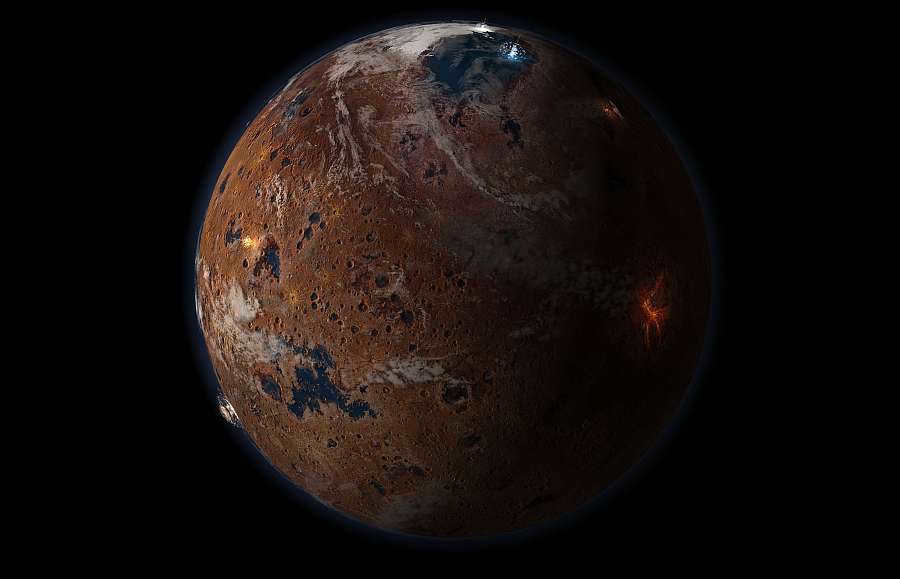

During the Noahic period, the appearance of the planet might have been like this.
Both Mars and Venus have distinct climates that are vastly different from Earth. The surface temperature of Venus, which is the second planet from the Sun, averages at 461 °C across its entire surface. This extreme heat is enough to melt lead. On the other hand, Mars has an average temperature of -46 °C. The significant temperature difference between the two planets is mainly due to Venus being closer to the Sun and having a dense carbon dioxide atmosphere. In fact, Venus’ atmosphere is almost 100 times thicker than Earth’s, while Mars’ atmosphere is only 1% as thick as ours.
Space Exploration
Mars, the fourth planet from the Sun, has been the subject of extensive study and exploration within our solar system. Numerous missions, ranging from orbiters to rovers, have been launched to gather data and knowledge about this fascinating planet. Despite many failed attempts, there have been several successful missions that are still operational today, providing valuable insights into Mars’ geological composition and potential for supporting life.
Similarly, Venus, the second planet from the Sun, has also been the target of various space missions. However, due to the hostile and extreme conditions on the planet’s surface, only a limited number of images have been captured so far.
While Mars has two natural satellites, Phobos and Deimos, Venus does not have any satellites or rings. In terms of size, there is a notable difference between the two planets. As a general rule, smaller and more compact celestial bodies are found closer to the Sun, while gas giants like Jupiter and Saturn are located farther away.
We often perceive the Earth as a massive celestial entity. However, in the grand scale of the Solar System, it can be likened to a minuscule coin. Nevertheless, there exist cosmic bodies that are comparable in size to our planet, while there are also colossal giants that could effortlessly house over a hundred Earth-like entities within their vast dimensions.
An Arrangement of Planets Based on Size: From Smallest to Largest
We shall now proceed to enumerate the planets of the Solar System in ascending order of their sizes, accompanied by concise descriptions:
Mercury holds the distinction of being the smallest planet in our solar system
With a diameter of 2439.7 km, Mercury not only takes the prize for being the smallest planet, but it also holds the titles for being the closest to the Sun and the fastest in orbit. Unlike other planets, Mercury does not have any satellites orbiting around it, and its atmosphere is not complete. The surface of Mercury is marked by a multitude of craters, evidence of countless collisions with meteorites. Additionally, the magnetic field of Mercury is exceptionally feeble.
Mission to Mars 2
Mars is located at a distance of 3389.5 km from the Sun, making it the fourth planet in our solar system. It bears a striking resemblance to our own planet Earth in terms of its structure and size. However, the Martian atmosphere is significantly thinner and is composed mostly of residual amounts of methane and carbon dioxide. The surface of Mars is diverse and contains pockets of water in the form of ice beneath its crust. Additionally, Mars is accompanied by two natural satellites, Phobos and Deimos.
Venus is the third planet from the Sun
Venus is located 6052 km away from the Sun. It is the second farthest planet from the Sun and the only one that is similar in size to Earth. Unlike Earth, Venus does not have any satellites. The atmosphere of Venus consists of a mixture of carbon dioxide and concentrated acids. The lower layers of the atmosphere experience extremely high temperatures. In terms of structure, both Venus and Earth share similarities. However, Venus is unique in its elongated trajectory of motion and its remarkably slow speed of axial rotation.
Earth is the fourth
Earth has a diameter of 6371 kilometers. It is the only known celestial body that supports life. Earth has one natural satellite, which is the Moon. It is surrounded by a dense atmosphere rich in oxygen and has diverse landforms.
Neptune is the fifth
Neptune has a diameter of 24622 kilometers. It is the first and farthest planet among the gas giants. Beneath its hydrogen-helium atmosphere, Neptune hides a shell made of hydrocarbon ice. It is known for having the fastest and largest hurricanes in the solar system. So far, scientists have discovered 14 satellites and a system of dust rings around Neptune.
Uranus is the sixth largest planet in the solar system and the coldest of all objects in the group.
With a diameter of 25362 km, Uranus possesses a unique set of characteristics. It boasts a complex magnetosphere, complete with displaced magnetic poles. One of its most distinguishable features is its retrograde orbital rotation and the large angle of inclination relative to its axis, giving it the appearance of “lying on its side.” Additionally, Uranus is accompanied by 27 known satellites and is surrounded by 13 rings made up of uranium.
Saturn, the seventh planet in the Solar System
Saturn measures approximately 58,233 kilometers in diameter, making it the second largest gas giant in our solar system. With its elaborate system of rings and over 62 satellites, Saturn is a fascinating celestial body. Its diameter is almost 10 times greater than that of Earth, to be precise, 9.5 times larger.
Jupiter, the largest planet in our solar system
Jupiter boasts an impressive diameter of 69,912 kilometers. It is second only to the Sun in terms of size and mass. With more than 80 satellites and a few faint rings, Jupiter is a remarkable planet. Its powerful magnetosphere has a significant influence on other objects in the solar system. The chemical composition of Jupiter is mainly comprised of hydrogen and helium in various states of matter.
The process of planet formation
What accounts for the distinctiveness of each planet? The answer lies in the unique conditions under which they were formed. The initial quartet of celestial bodies – Mercury, Venus, Earth, and Mars – possess a relatively modest size and a solid surface. These planets originated from the planetesimals closest to the Sun, with the gases contained within them vaporizing and leaving behind heat-resistant metals and rocks that eventually coalesced into their current form. However, their growth was curtailed by the presence of gas giants, which attracted a significant portion of the available “building material.”
Gas giants, on the other hand, developed farther away from the Sun. Clusters of hydrogen and helium, subjected to colder temperatures, gradually accumulated to form the largest entities in this section of the galaxy.
A Comparative Analysis of the Planets
The following visuals present a comparison of the sizes of the planets within our solar system. It becomes evident that the Earth is a relatively diminutive celestial entity, with a diameter that pales in comparison to that of the Sun or Jupiter.
Currently, the International Astronomical Union (IAU) is in the initial stages of revising certain astronomical definitions, which includes reevaluating the classification of “planet-like objects”. Consequently, this implies that smaller celestial bodies may soon be included in their official list, resulting in a reconfiguration of their hierarchical order.
About the variabilities in size and density of planets
It is common knowledge that planets within our solar system exhibit significant differences in their sizes.
For instance, the planets situated in the inner region of our system tend to have smaller dimensions, while possessing higher densities when compared to the gas or ice giants found in the outer region of the solar system. Furthermore, there are cases where planets can be even smaller than certain satellites. Nevertheless, the size of a planet does not necessarily correlate with its mass.
As a result, even though Mercury may have a smaller size than Jupiter’s moon, Ganymede, or Saturn’s moon, Titan, it surpasses those satellites in terms of mass, being more than twice their weight. Similarly, despite Jupiter being 318 times more massive than Earth, its radius is only 11.21 times that of Earth.
Let us now delve into the distinct characteristics of each planet.
Mercury
With a mean diameter of 4,879 kilometers (3,031.67 miles), Mercury is the smallest planet in our solar system. It is also the second densest planet, after Earth, with a density of 5.427 g/cm3.
Similar to other terrestrial planets, Mercury is composed of silicate rocks and minerals, as well as a disproportionately large iron core compared to its crust and mantle. As a result, its mass is approximately 0.330 × 1024 kg, which is about 0.055 times the mass of Earth. The gravitational acceleration on Mercury’s surface is only 3.7 m/s2.
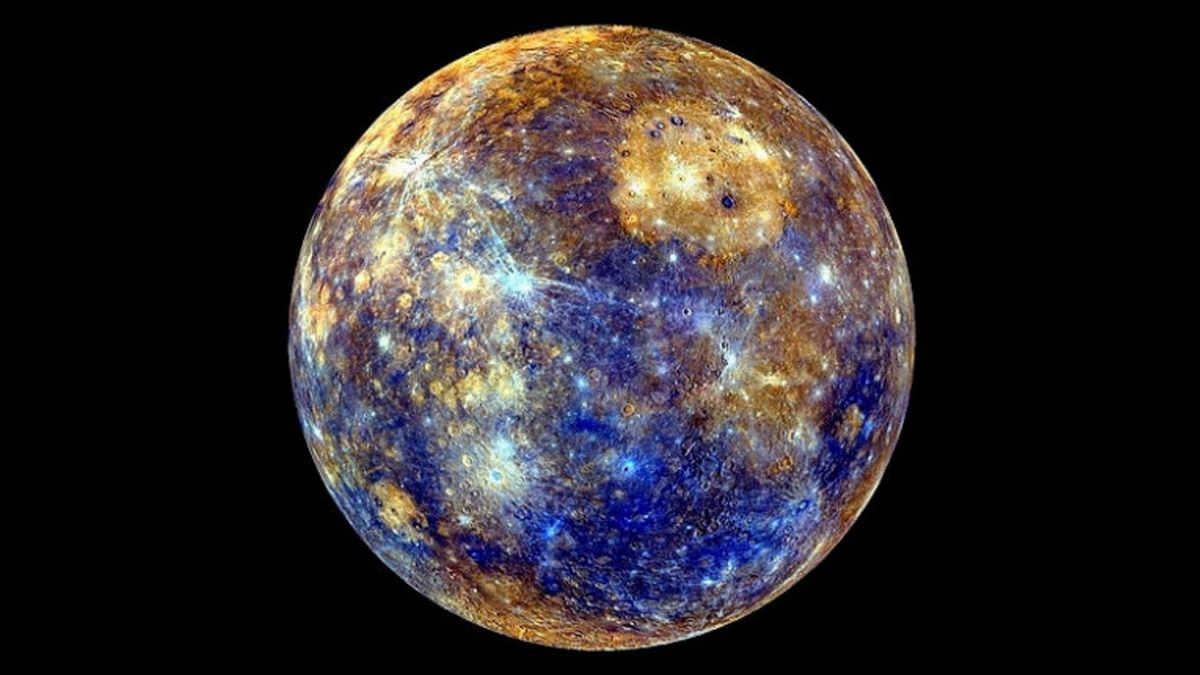
Mercury. Authors and rights: NASA / Johns Hopkins University Applied Physics Laboratory / Carnegie Institution of Washington.
Venus
Venus, sometimes referred to as the “sister planet” of Earth due to its similarities in composition, size, and mass, has a density of 5.243 g/cm 3 . It is positioned as the second planet from the Sun, with an average radius of approximately 6050 kilometers (3759.3 miles). This results in a mass of the planet reaching 4.87*10 24 kg, which is equivalent to 0.815 times the mass of Earth. Considering its density and size, the gravitational force on Venus is comparable to that of Earth and is approximately 8.87 m/s 2 .
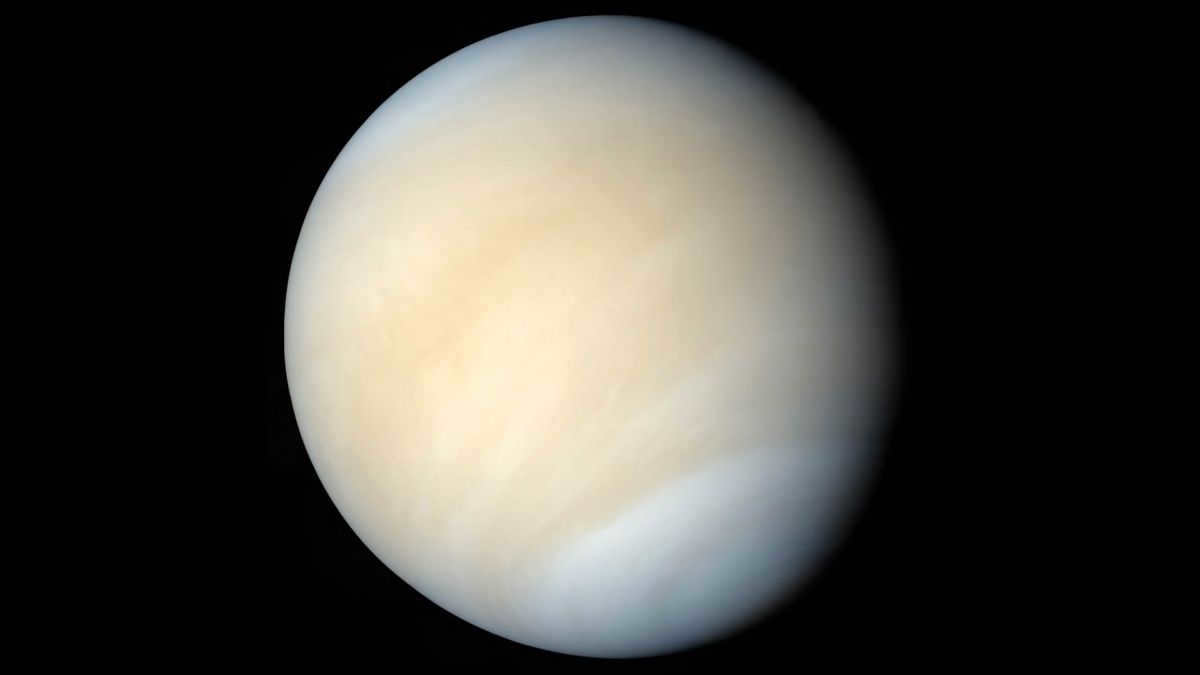
The photograph of Venus in its true colors was captured by the Mariner probe. These original images are in the public domain and belong to NASA / Ricardo Nunes.
Earth
Similar to the other inner solar system planets, Earth is also comprised of metals and silicates. It has an average radius of 6371 kilometers (3,958 miles) and an average density of 5.514 g/m 3 , making it the largest and densest planet in the Earth group. The mass of Earth is approximately 5.97*10 24 kg, and its gravitational force is 9.8 m/s 2 , as commonly known.
Mars, the third largest planet in the Earth group, is composed of metals and silicate rocks, similar to the other planets. However, Mars is significantly smaller than Earth, with an average diameter of 6792 kilometers (or 4220 miles), and it has only one-tenth of Earth’s mass.
To put it simply, Mars has a mass of 0.642*10 24 kilograms, which is approximately 0.11 times the mass of Earth. With its size and density (measured at 3.9335 g/cm 3 ), the gravitational force on Mars is limited to 3.8 m/s 2 .
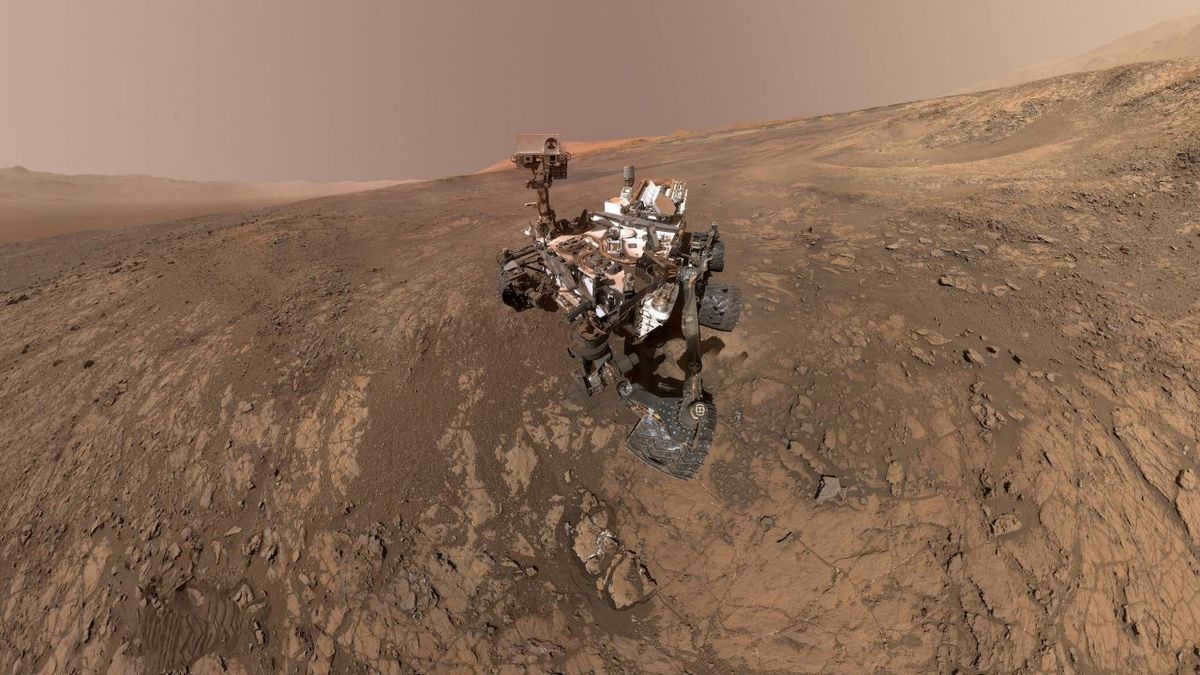
The self-portrait shown above was captured by the Mars rover Curiosity on January 23, 2018, while it was exploring the slopes of Mount Sharp. The image is credited to NASA JPL-Caltech.
Jupiter
Jupiter, the largest planet in our solar system, has an average diameter of 142,984 kilometers. In fact, it is so big that it could easily contain all the other planets (except Saturn) within its volume. However, despite its immense size, Jupiter’s mass of 1,898 x 10^24 kilograms makes it almost 2.5 times more massive than all the other planets combined. Despite its great mass, Jupiter’s overall density is lower compared to the terrestrial planets like Earth. Its average density is 1.326 g/cm^3.
Saturn
Saturn is the second largest gas giant, and it has a slightly smaller average diameter of 120536 kilometers compared to Jupiter. However, Saturn is less massive than Jupiter, with a mass of 569*10 24 kilograms. Although it is 95 times more massive than Earth, its density is only 0.687 g/cm 3 , making it the only planet in the solar system with a lower density than water (1 g/cm 3 ).
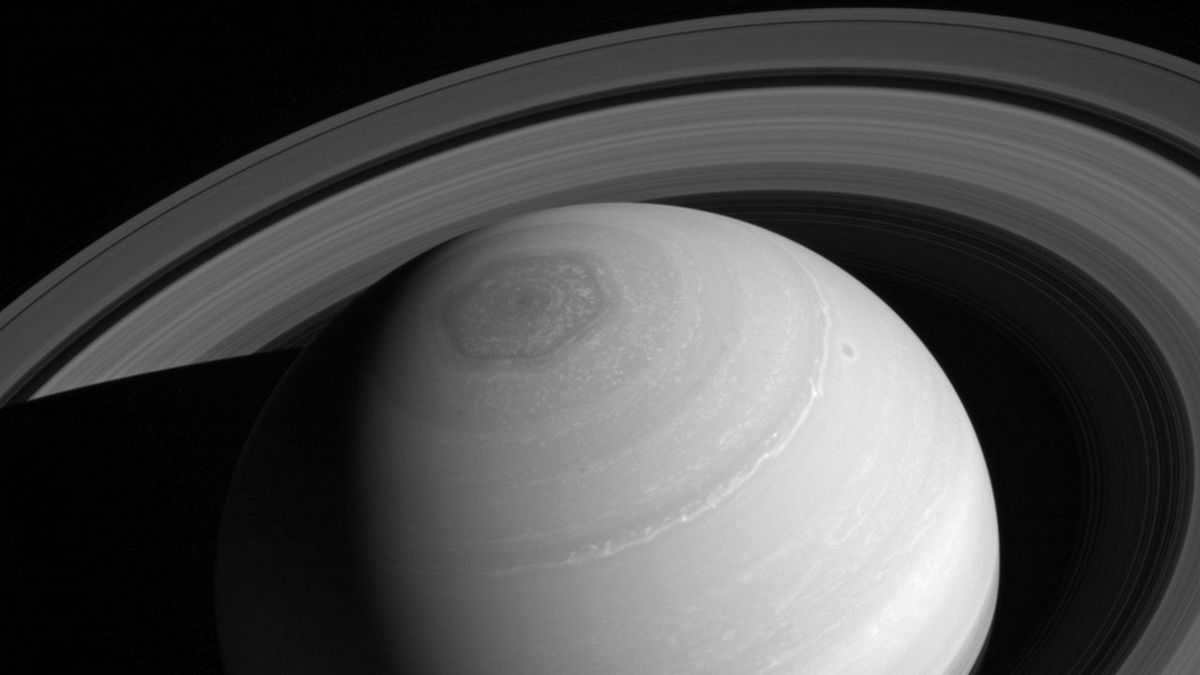
The clouds of Saturn. Ownership and rights belong to NASA / Cassini.
Uranus has a mean diameter measuring 120,536 kilometers and is ranked as the third largest planet within the solar system. With a mass of 86.8*10 24 kg, Uranus stands as the fourth most massive planet. Consequently, its average density equates to 1.271 g/cm 3 .
Neptune
Neptune has a diameter of 49528 kilometers, which is about four times the size of Earth. Its mass is 102*10 24 kg, making it one of the largest planets in the solar system. As a result, Neptune has a density of 1.638 g/cm3, which is greater than that of any other gas giant.
From the information provided, it is clear that the masses of the planets in the solar system vary significantly. However, when it comes to density, size is not always proportional. In other words, even though some planets may be only a few times larger than others, they can still be much more massive.
Is Mars bigger than Venus?
By subscribing, you can remove banner ads from RBC’s websites and ensure their proper functioning.
For just 90₽ 30₽ per month, you can use the subscription on up to 3 devices.
The subscription will automatically renew every month, but you can unsubscribe at any time.
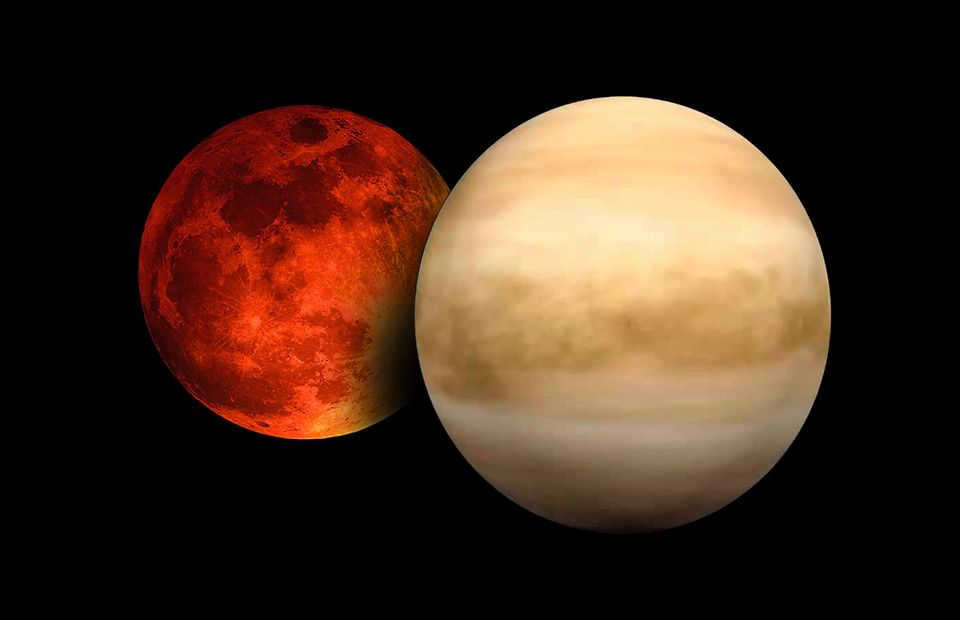
Which organization is committed to sending individuals to Mars?
Currently, in addition to governmental entities, numerous private enterprises are involved in initiatives to transport humans to the Red Planet. Each of these organizations periodically announces target dates for their inaugural missions, although several deadlines have been missed thus far. One such example is Inspiration Mars, which pledged to dispatch a small spacecraft carrying a married couple to Mars in 2018.
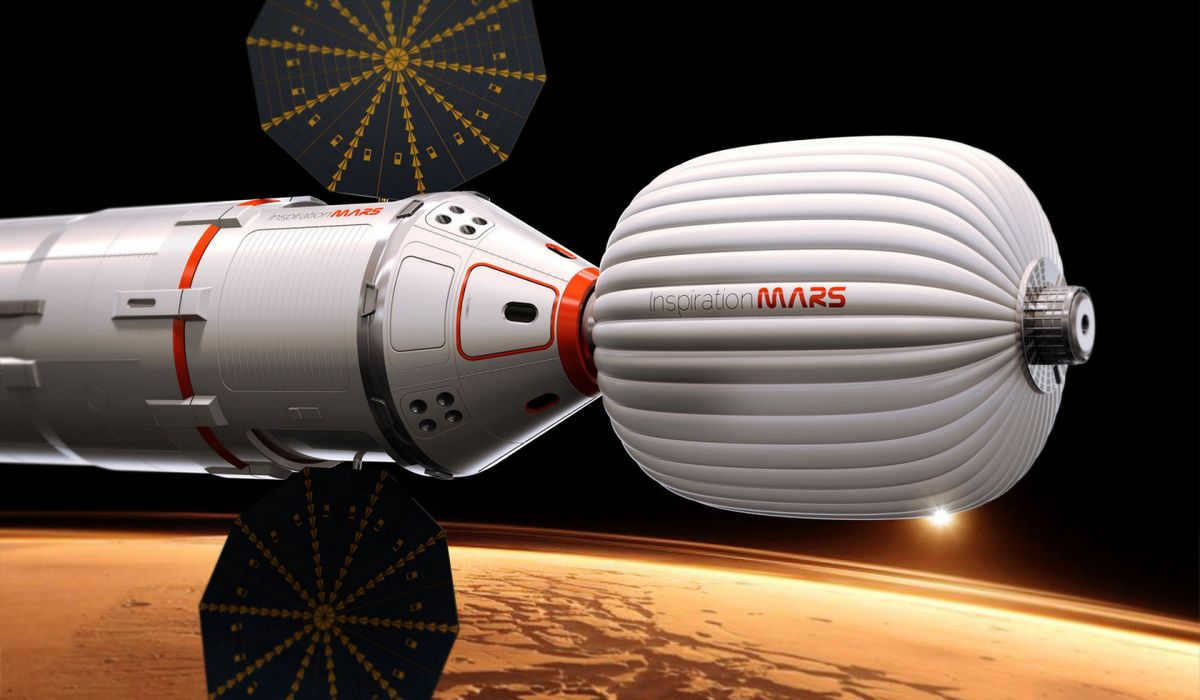
One of the most well-known individuals in this field is Dutch businessman Bas Lansdorp and his firm Mars One, which has faced significant scrutiny from the scientific community. Lansdorp began the process of selecting colonists five years ago and made a commitment to send the initial crew to Mars by 2027. However, to date, the company has yet to develop a feasible plan for the rocket and spacecraft.
However, there is a single organization that the scientific community has faith in when it comes to its commitment to transport people to Mars. This organization is SpaceX, led by Elon Musk. Interestingly, Musk has expressed his willingness to personally embark on a one-way journey to Mars within the next seven years. He firmly believes that the key to successful colonization lies in the development of a reusable rocket, as the high implementation costs would otherwise make it nearly impossible. At this stage, Musk has no intention of selling shares in the Martian project. Instead, he envisions the colonizers themselves becoming shareholders.

One of the main challenges associated with Mars is the vast distance of a few hundred million kilometers, but this obstacle is no longer insurmountable. Scientists are confident that we have the capability to reach Mars. However, the more pressing concerns revolve around the question of how we can sustain human life on the planet. Although still just theoretical, there are already potential solutions being considered.
For instance, Mars does have water in the form of ice, which can be melted for use. However, it is mixed with regolith in the soil, so we would require specialized equipment from Earth to separate the two. Alternatively, we could extract water from the moist Martian atmosphere using a water vapor adsorption reactor. It is worth noting that the atmosphere on Mars is predominantly composed of carbon dioxide, but NASA is already developing a device that can split it into oxygen and carbon monoxide.
There have already been considerations made regarding options for cultivating food on Mars. Firstly, scientists have recognized that the regolith, which is present on the Martian surface, might be a suitable soil for growing crops. Secondly, hydroponics could potentially be utilized. However, these plans are intended for future endeavors, as the initial group of colonizers will inevitably need to bring their own food supplies. Additionally, scientists are also addressing other important factors, such as the low gravity on Mars and the threat of cosmic radiation. They are actively working on the development of spacesuits that can support life in weightlessness and exploring methods to protect spacecraft from radiation. Regardless, the initial settlers will need to spend the majority of their time in shielded rooms or underground.

There are also ideas being considered to transform Mars into a more Earth-like planet. One idea is to send asteroids containing water to Mars and use special flexible mirrors to reflect sunlight, which would help to warm up the cold planet.
It may seem like the destination has already been decided and we just need to wait and see which company will be the first to realize their plan. However, NASA has been working on a program to colonize Venus for several years now, in addition to their Mars research. Venus is seen as an intermediate point on the journey to settling the Red Planet.
So, what exactly is Venus?
Venus is the most explored and enigmatic planet in our solar system. It has been observed since ancient times and has captivated the minds of Greek, Indian, and Babylonian thinkers due to its remarkable brightness. Even Homer mentioned it in the Iliad, referring to it as the evening star Hesperus. The study of Venus’s phases during the Age of Enlightenment played a crucial role in supporting the heliocentric model of the universe. While the United States focused on Mars exploration in the 20th century, the Soviet Union dedicated its efforts to studying Venus. Through numerous orbital missions and surface landings (with the Venus 13 spacecraft holding the record for the longest duration at 157 minutes), scientists have gathered extensive information about the Venusian climate, soil composition, and atmospheric makeup.
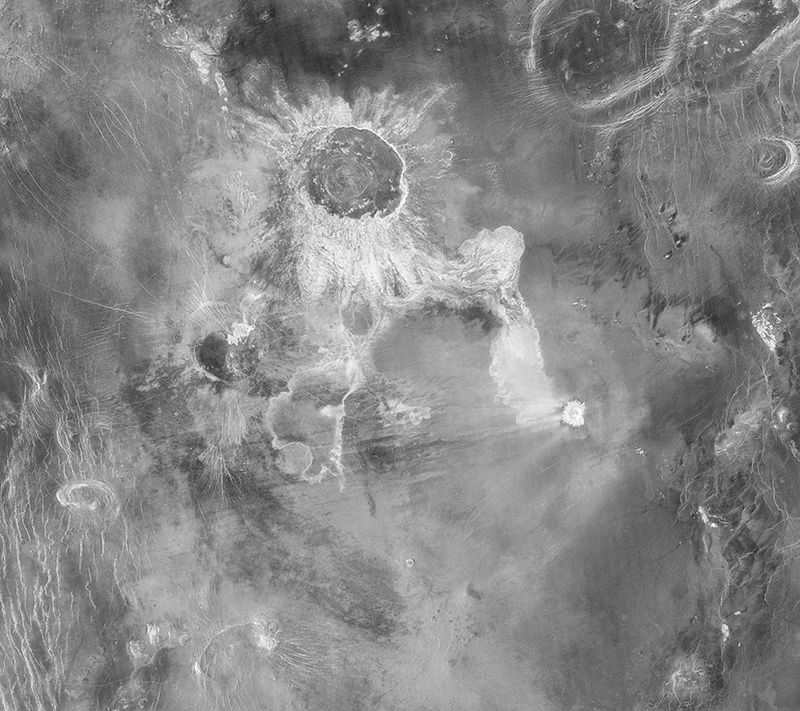
All previous assumptions about the existence of life on Venus have been proven false as of the mid-20th century. To state that the environment on Venus is unfavorable would be an understatement. Due to the intense greenhouse effect, the average surface temperature on Venus is even higher than on Mercury, despite its closer proximity to the Sun. It reaches a scorching +470 ° C (a temperature at which lead can melt). Additionally, the atmospheric pressure on Venus is a staggering 90 times higher than that of Earth, comparable to the pressure at a depth of 1 km in the ocean. Furthermore, the surface atmosphere of Venus is composed of 97% carbon dioxide.
Venus does not have any water, not even in the form of vapor. However, it does have clouds made of sulfuric acid. These clouds make it impossible to see the surface of Venus in visible light and also block solar energy. The weather on Venus is extremely harsh. Due to the planet’s structure and the composition of its atmosphere, there are frequent lightning storms and endless hurricanes. This is in contrast to Mars, where scientists believe it is unlikely for someone to be swept away by a storm, as depicted in “The Martian” movie. Additionally, Venus rotates in the opposite direction compared to most other planets, and it rotates very slowly. In fact, a day on Venus lasts almost 117 Earth days.
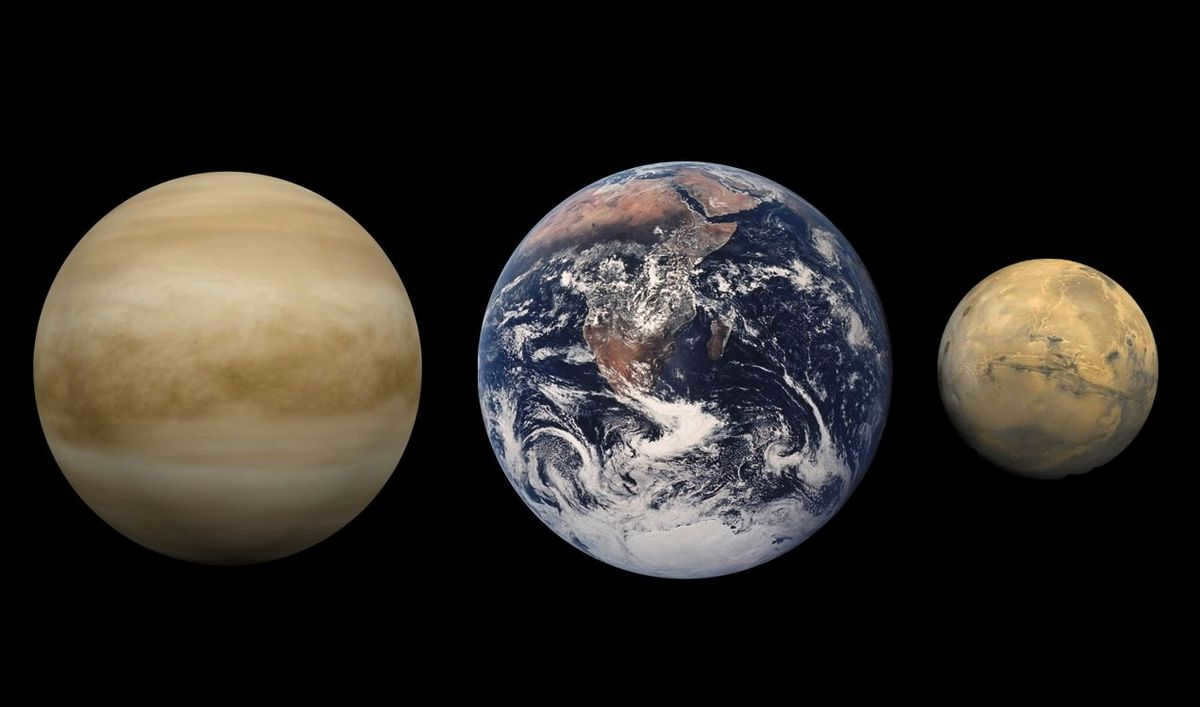
However, Venus continues to be a great enigma for scientists. Being Earth’s closest neighbor and sharing its size and atmospheric composition, Venus is completely inhospitable for life. However, this may not have always been the case. There are theories suggesting that Venus once had an ocean and was similar to Earth in many ways. It is even possible that life once existed on Venus, but the greenhouse effect caused its demise. This is why scientists are eager to gather as much information about this planet as possible – to gain a better understanding of our own present and future. It is also why Stephen Hawking warned that if we follow Trump’s policies, we could turn Earth into another Venus.
So, how could we potentially colonize Venus?
Indeed, attempting to transform our neighboring planet into a more Earth-like environment is a worthy endeavor. However, the task of terraforming Venus proves to be even more challenging than that of Mars. An interesting approach to consider is the possibility of transporting water to Venus through the use of asteroids. Yet, it is important to recognize that this method may inadvertently exacerbate the planet’s already extreme heat, causing the water to evaporate and intensify the greenhouse effect.
Scientists are of the opinion that, at present, it is imperative to refrain from landing on Venus and instead settle approximately 50 km above its surface. The upper layers of the atmosphere on Venus are deemed not only more conducive to sustaining life but are also considered the most hospitable place for humans in the entire Universe, apart from Earth. The atmospheric pressure there is roughly equivalent to that on Earth, and the temperature is not as extreme as on the planet’s surface, only reaching +75°C. Furthermore, above the surface’s enveloping clouds, there is an abundance of solar energy (40% more than on Earth), and the dense atmosphere, which closely resembles Earth’s composition, acts as a reliable shield against cosmic radiation (a significant challenge on Mars).
Atmospheric winds circulate around the globe at a relatively high velocity, so spending a day at an altitude of 50 km will not equate to 117 days, but merely 4. The gravitational force at this height is 90% of Earth’s, which should be sufficient to prevent weightlessness. Moreover, Venus is more accessible than Mars – it is 15 million kilometers closer to us (assuming the minimum possible distance to both planets), and “launch windows” (when the planet is closest to us) occur every year and a half, as opposed to two years for Mars.
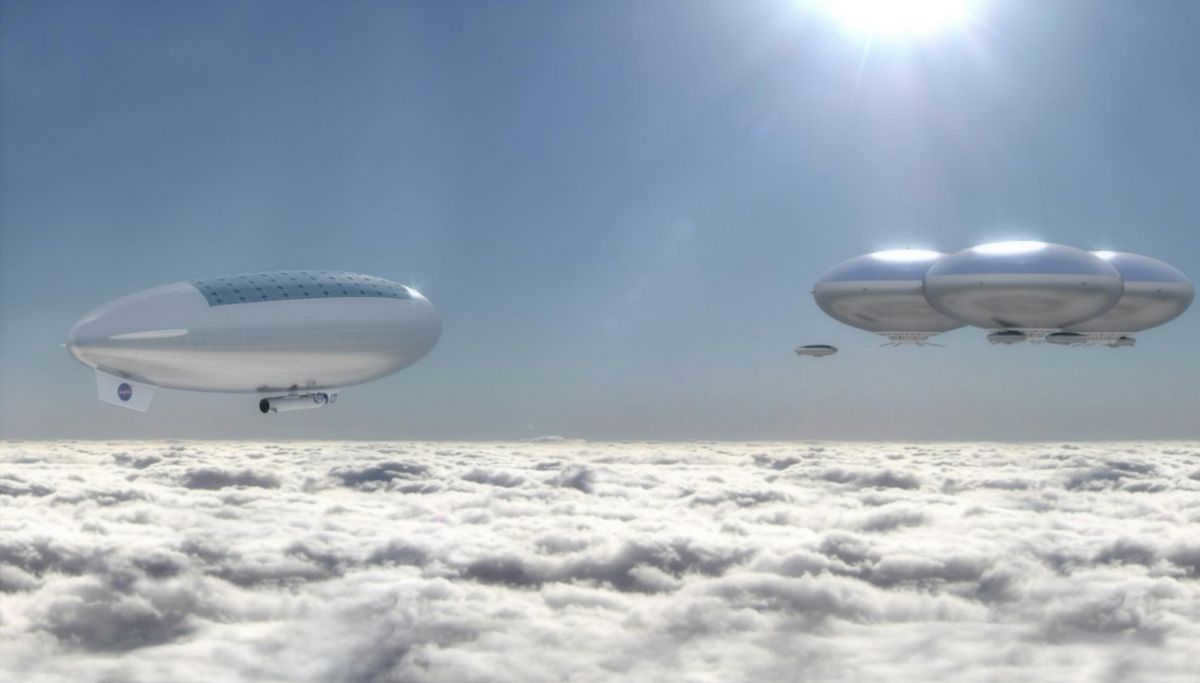
The High Altitude Venus Operational Concept, a project by NASA, envisions the presence of humans above Venus in specialized airships measuring 129 meters in length and 34 meters in height. These airships will be equipped with external solar panels and internal trusses. However, the project will initially focus on smaller-scale developments, starting with a robotic mission, followed by an orbital mission, and then progressing to one-month and one-year intraatmospheric missions. Eventually, the goal is to establish a fully functional floating city. Simultaneously, NASA plans to launch vehicles on the surface of Venus to capture real-time images and transmit them back to the base, ensuring continuous exploration of the planet itself.
Presumably, it should be easier to launch to the asteroid belt from there than from Earth (although Mars is the preferred option), which is known to contain valuable minerals worth approximately a hundred billion dollars for each individual currently residing on Earth. We may be on the verge of a new gold rush and an era of groundbreaking discoveries, this time extending across the entire solar system.
Mars and Venus are the two celestial bodies that bear the closest resemblance to Earth. Both can be observed with the naked eye and stand out as two of the most prominent objects in the night sky. Venus has an average distance from the Sun of only 108 million kilometers, while Mars is situated at a distance of 228 million kilometers.
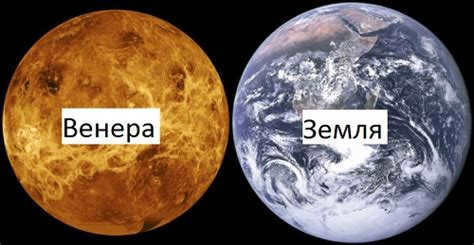
Here are some questions about Venus and Mars:
- What are the differences between Venus and Mars?
- Which planet is the target for colonization?
- Which planet is the coldest in the solar system?
- Which planet is the hottest?
- How is Venus different from all the other planets?
- What is another name for Venus?
What sets Venus apart from Mars?
Unlike Mars, Venus has an average surface pressure of 92 bars and a surface temperature of +462 degrees Celsius. On the other hand, Mars has an average surface pressure of 0.006 bar and a surface temperature of -63 degrees Celsius. Comparatively, Earth maintains an atmospheric pressure of 1 bar and an average surface temperature of 14 degrees Celsius.
What similarities can be found between Earth and Venus?
Both Earth and Venus share similarities in terms of size, mass, density, and gravity.
Which planet is closer to Earth, Venus or Mars?
The distance between Earth and Venus ranges from 38 million to 261 million kilometers, while the distance between Earth and Mars ranges from 54.06 million to 400 million kilometers. Therefore, Venus is closer to Earth.
In what ways are Mercury, Venus, and Mars similar to Earth?
The Earth-group planets, including Mercury, Venus, Earth, and Mars, are characterized by their solid surfaces and lack of rings. These terrestrial planets are primarily composed of rocks and metals.
Originally, the statue of Venus was thought to be from the Classical period (510-323 BC). However, the inscription on the pedestal attributes the statue to Alexandros, the son of Menides, a resident of Antioch on the Meander: “Andros, son of Menides, of the city of Antioch of Meander made” (ανδρος Μηνίδου / [Ἀντ]ιοχεὑς ἀπὸ Μαιάνδρου / ἐποίησεν…).
What is the desired destination for colonization?
The objective is to establish a permanent settlement on Mars for the purpose of scientific exploration of the planet and its moons. In the long run, there is also a goal to explore and potentially colonize the asteroid belt, as well as the outer planets of our Solar System, including mining operations.
What is the name for the inhabitants of Venus?
The beings that inhabit Venus are known as Venusians. Venus is the second planet in our Solar System.
Which planet closely resembles Earth?
Venus is one of the rocky planets in our Solar System, known as the Earth-group. It shares many similarities with our own planet in terms of size and mass. In fact, Venus is only slightly smaller in diameter by 650 kilometers, and its mass is 81.5% that of Earth’s.
What is the most frigid planet in the universe?
Having mentioned that, Uranus, which is 1.7 billion kilometers nearer to the Sun, holds the record for being the most frigid planet in the entire solar system. Uranus boasts a minimal temperature of minus 224 °C.
Which planet is the most scorching?
Venus possesses an average surface temperature of 735 K (462 °C), making it the planet with the highest temperature in the solar system, despite Mercury’s proximity to the Sun.
What is the designation of the nearest star to Earth?
Proxima Centauri (derived from Latin proxima – closest), Alpha Centauri C, is a red dwarf star that is a part of the Alpha Centauri star system, securing the title of being the closest star to the Sun.
What is the most colossal planet in outer space?
Jupiter, the largest giant planet in the solar system, is dwarfed in size by the exoplanet WASP-17 b. Located in the Scorpius constellation, 1,307 light-years away from Earth, WASP-17 b boasts a diameter twice as large as Jupiter, making it the largest planet in the known universe.
So, what is the smallest planet in the world?
Mercury holds the title for the smallest planet in our solar system. With a radius of approximately 2,440 kilometers (about 1/3 the width of Earth), Mercury is even smaller than the Moon, which has a radius just over 1,609 miles. Coming in second place is Mars, with a radius of about 3,389 kilometers.
Now, let’s answer the question: how many planets are there?
| The planet that is the farthest away from the Sun | Neptune (4.503 billion km, 30.1 a.u.). |
| Distance to the Kuiper Belt | approximately 30-50 a.u. |
| Amount of stars | 1 (The Sun) |
| Total amount of known planets | 8 |
What sets Venus apart from other planets?
Venus stands out with its exceptionally long rotation period around its axis, lasting approximately 243 Earth days (averaging 243.0212 ± 0.00006 days), making it the planet with the longest rotation period in the entire solar system. Additionally, Venus has the unique characteristic of rotating in the opposite direction compared to most other planets.
Which planet lies between Mars and Venus?
Earth, the third planet from our central star, is positioned at a distance of 149.6 million kilometers. It is situated between the planets Venus and Mars. Earth has a radius of 6.3 thousand kilometers and a mass of 5.972E25 kilograms.
Is Venus larger than Mars?
Mars is smaller than both Earth and Venus, with a mass of only 0.107 Earth masses.
What are alternate designations for Venus?
Hesperus, Phosphorus, Lucifer, Eosphorus, Vesper – these were the appellations bestowed upon Venus during ancient times. It materializes before sunrise and in the evening, during twilight. In the early epochs, Venus, unaware of its identical nature, was referred to as the Morning and Evening Star.
Why is Venus not visible to the naked eye?
Venus remains invisible to the naked eye due to its proximity to the Sun, never straying more than 47.8 units from it. Consequently, the planet can only be observed shortly before sunrise or after sunset. Its visibility under these circumstances has earned it the monikers “Evening Star” or “Morning Star”.
What are some other names for Venus?
Venus is occasionally referred to as the “morning star” and the “evening star”. This nomenclature stems from ancient civilizations perceiving Venus as two distinct stars appearing in the sky.
Video: Are Venus and Mars similar?
Did our responses provide assistance?
Trending in the past 24 hours


In order for a male baby to be born, the egg must encounter a sperm cell carrying a Y chromosome. However, when it comes to the question of which gender is born more often, the answer is not as straightforward. There are various factors that influence the ratio of male to female births, including genetic and environmental factors. So, determining whether Mars (boys) or Venus (girls) is born more frequently is a complex matter that cannot be easily answered.

What is the best way to identify your Tarot archetype?
Therefore, how can you establish which Archetype resonates with you? Remove the 22 Major Arcana cards from the complete deck, and then locate the 4 ka.
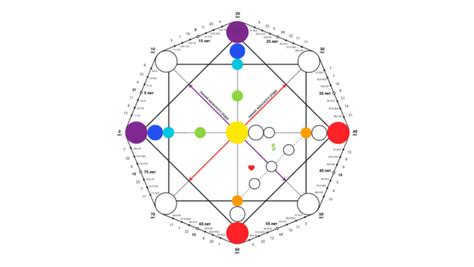
How can one comprehend the Matrix of Fate?
To unlock the secrets of the Matrix of Fate, one must utilize their complete date of birth. It is through this information that the matrix takes form.

What is the best way to ascertain one’s wealth?
As per common belief, the fortunate number is the number that represents one’s life path, which can be calculated using various methods.

In numerology, the number 5 holds great significance as it is considered to be a potent symbol for attracting wealth.

What is the purpose of the wealth code?
The wealth code serves as a pin code for your phone or bank card, and can also be written down on a piece of paper for easy reference.

Which numbers on banknotes can attract wealth?
The combination of three eights is considered the most auspicious. Having this number on a banknote is believed to bring success, prosperity, and financial stability. If you come across it, consider yourself lucky.

What are the money notes that have the power to attract money?
Based on the ancient teachings of China, the number eight is believed to be the most effective in attracting wealth. This belief is especially true when it comes to the serial number of the currency notes.
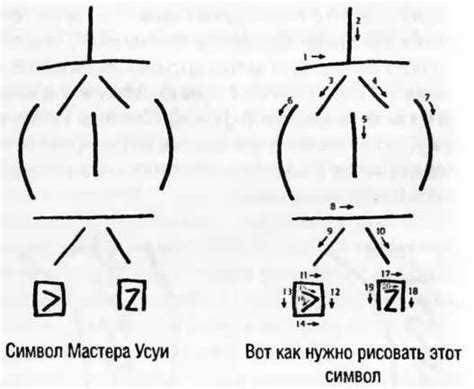
Which symbol is associated with prosperity?
What phrases can attract money? Some examples include: happiness, wealth, and luck.

What digits are appropriate for the price?
The allure of prices that conclude with 9 resides in the impact of the leading numeral. Our mind is more perceptive.
At present, there are a number of missions underway on Mars. It is being photographed, rovers are traversing the planet’s surface, and helicopters are being launched into the atmosphere. Nevertheless, certain scientists are convinced – all the focus is being directed towards the incorrect planet. “Hitech” elucidates on what space agencies across the globe are overlooking.
Read “Hitech” at.
In the past year, there have been numerous significant findings concerning Mars. “Webb” has captured images of the planet, scientists have examined rock samples from Mars that contain evidence of familiar life forms, and data from the Zhurong rover has already altered scientists’ perspectives on its history of aridity. Additionally, Elon Musk remains fervently dedicated to the concept of establishing a colony on Mars. However, it is possible that both the entrepreneur and scientists are mistaken, and perhaps we should direct our attention towards Venus.
Notoriety of Venus
Venus has gained notoriety due to its unfavorable reputation. It is often referred to as Earth’s “toxic sister” and serves as a cautionary example of the potential consequences of not addressing global warming.
The extreme heat on its surface, reaching temperatures capable of melting lead, makes it highly unlikely for scientists to consider sending humans to this fiery planet. Furthermore, the oppressive atmospheric pressure and the presence of sulfuric acid clouds render Venus completely inhospitable.
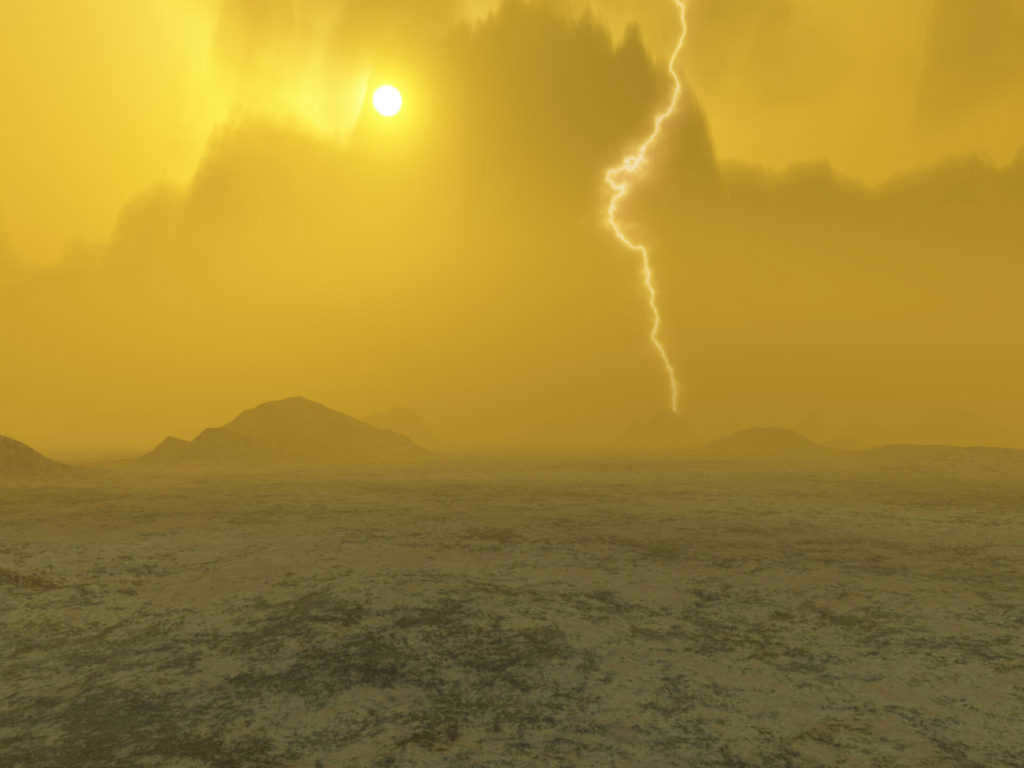
However, a group of space experts is currently advocating for a shift in focus when it comes to space exploration. Their main objective is to prioritize sending a crewed mission to Venus, our closest celestial neighbor, instead of Mars.
What is their strategy?
This group of activists recently presented their case at the International Astronautical Congress (IAC) in Paris. They argued that due to Venus being much nearer to Earth than Mars, a crewed mission to this “neighbor” could be completed in a shorter timeframe and would yield valuable data for future Mars missions.
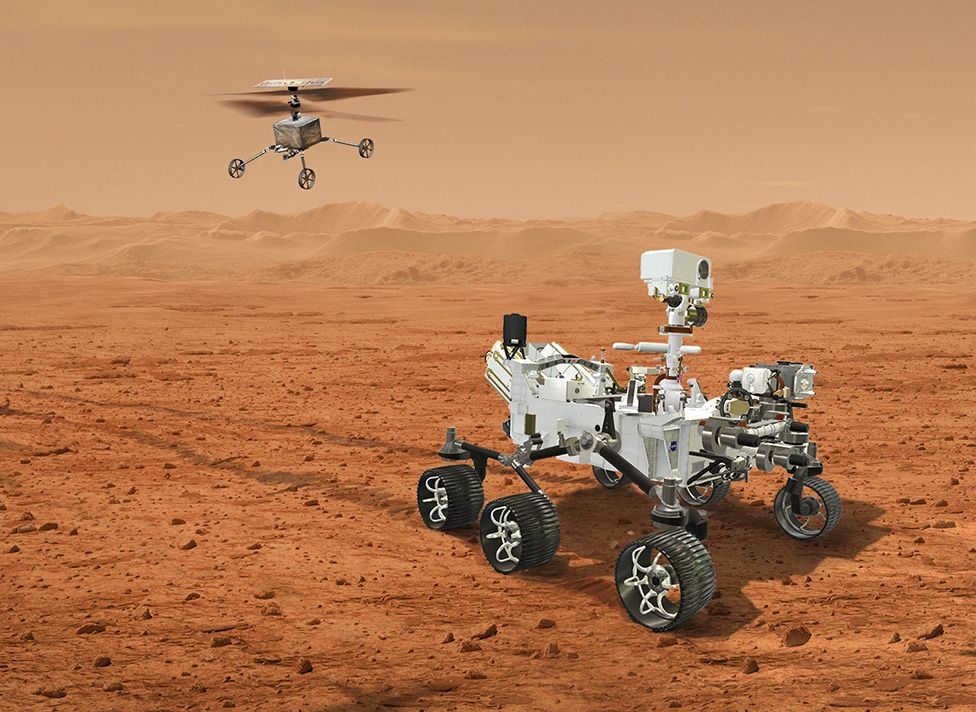
Therefore, reaching Venus and returning can be achieved in approximately one year, whereas a mission to the Red Planet and back would endure for a total of about three years. A manned expedition to the “sister” planet would provide scientists and astronauts with the opportunity to gain more insights into the impacts of prolonged deep space exploration on the human body within a relatively short period. The challenge lies in the fact that humans would be unable to land on Venus, but would instead conduct a crewed overflight.
Nonetheless, it would hold significant scientific value. Specialists believe that it is feasible to discover microbial life in the Venusian clouds. Furthermore, scientists are curious to understand how a planet that was once believed to be very similar to Earth transformed into the infernal environment it is today.
Does anyone have this in progress?
Indeed, the private space company Rocket Lab is currently engaged in a self-financed endeavor to dispatch a spacecraft to Venus for the purpose of exploration. As per the company’s outlined strategy, an unmanned mission is scheduled to occur within the coming year.
If all proceeds as anticipated, Rocket Lab will secure the distinction of being the first private space enterprise to successfully reach another celestial body, surpassing even SpaceX. Concurrently, NASA and the European Space Agency (ESA) are also diligently involved in their own missions to our neighboring planet.
All the arguments are in favor
During the IAC conference, scientists from the campaign group presented compelling reasons supporting the idea of exploring Venus. Despite its reputation for having a complex surface environment, Venus should not be overlooked as a potential destination. Dr. Noam Isenberg of the Johns Hopkins University Applied Physics Laboratory explained, “NASA’s current focus is on a Moon-to-Mars mission, but we believe that Venus can be a valuable additional target along the way.”
Dr. Isenberg further emphasized that, despite Venus being in the opposite direction to Mars, a crewed flyby of the planet could provide an opportunity for a gravity maneuver. This maneuver could potentially shorten the overall flight time to Mars. Therefore, including a crewed flight to Venus in a mission to Mars would be highly feasible.
A gravity maneuver refers to the intentional alteration of a spacecraft’s trajectory and velocity through the influence of gravitational fields from celestial bodies. The first successful execution of this maneuver occurred in 1959 with the Soviet automatic interplanetary station Luna-3.
Is this concept promising?
While a definitive answer is unavailable, the realm of possibilities remains open. Although a professor from Johns Hopkins University acknowledged that a Venus flyby mission currently lacks support, certain individuals within NASA express a willingness to participate in such endeavors. This includes Alexander McDonald, the chief economist at the U.S. aerospace agency, who chaired the IAC panel.
Isenberg and McDonald have recently collaborated on a research paper titled “Encountering the Divine Feminine,” which presents the case for prioritizing Venus as the first celestial body for human colonization, rather than Mars. This bold move would transform us into a multi-planetary civilization.
For further information, please visit:
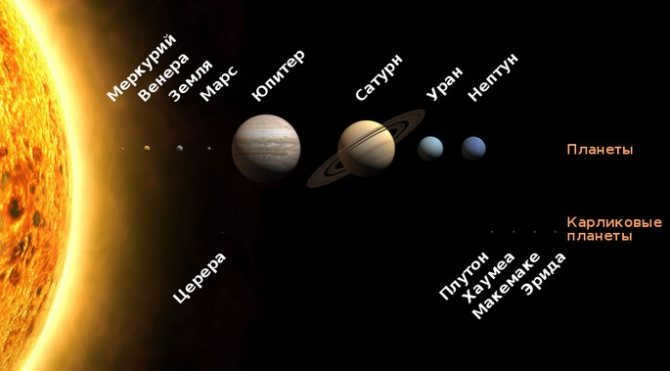
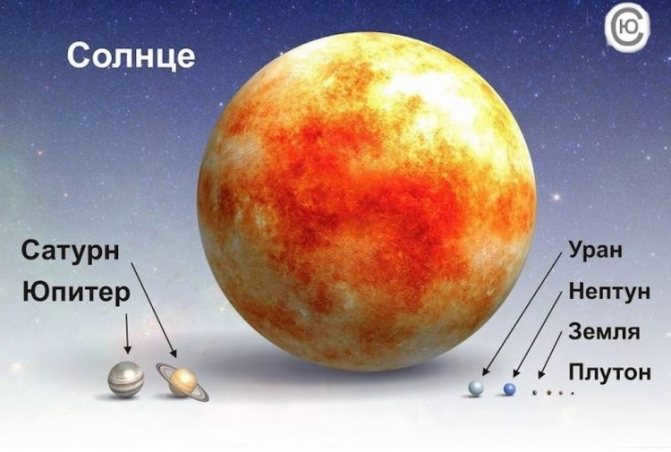
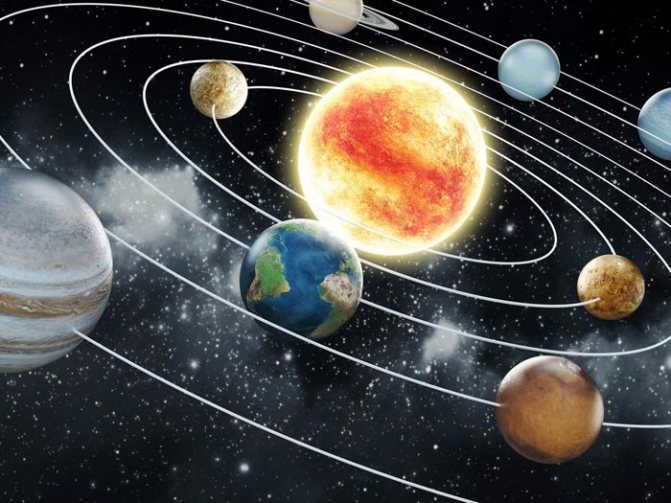
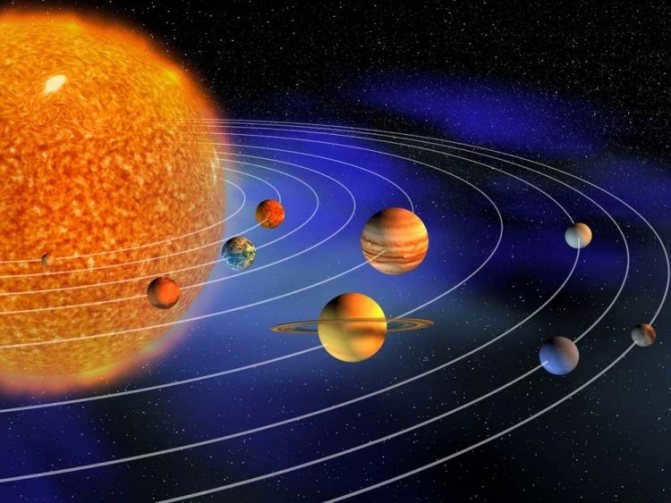
Our solar system is made up of the Sun, the planets that orbit around it, and other celestial bodies. Each of these planets is fascinating and enigmatic as there is still much to discover about them. Below is a list of the planets in our solar system, arranged in order of their size, along with a brief description of each:
There is a well-known hierarchy of the planets based on their distance from the Sun:
- Mercury: The closest planet to the Sun, Mercury is a small, rocky planet with a thin atmosphere.
- Venus: The second planet from the Sun, Venus is often referred to as Earth’s “sister planet” due to its similar size and composition. It has a thick atmosphere and extreme temperatures.
- Earth: Our home planet, Earth is the third planet from the Sun and the only known celestial body to support life.
- Mars: Often called the “Red Planet,” Mars is the fourth planet from the Sun. It has a thin atmosphere and is known for its dusty, desert-like surface.
- Jupiter: The largest planet in our solar system, Jupiter is a gas giant with a thick atmosphere and numerous moons.
- Saturn: Known for its iconic rings, Saturn is the sixth planet from the Sun and is also a gas giant.
- Uranus: The seventh planet from the Sun, Uranus is an ice giant with a unique sideways rotation.
- Neptune: The farthest planet from the Sun, Neptune is another ice giant with a deep blue hue.
Planets ranked by size: from smallest to largest
Here is a list of the planets in our solar system, arranged in ascending order of size, along with a brief description of each:
Mercury: the smallest planet
Mercury has a diameter of 2,439.7 km. It is the closest planet to the Sun and also the fastest in its orbit. Mercury does not have any natural satellites and its atmosphere is very thin. The surface of Mercury is heavily cratered from numerous meteorite impacts. Additionally, Mercury has a very weak magnetic field.
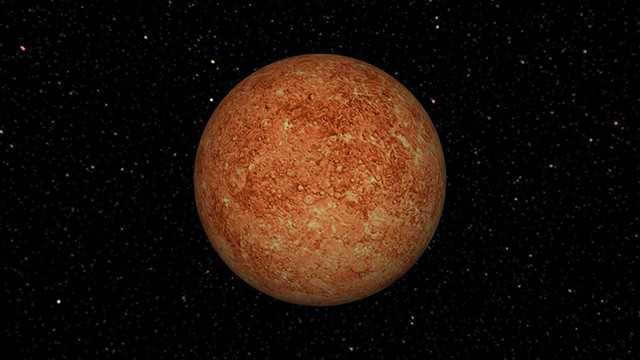
Mars 2
Mars is located at a distance of 3389.5 km from the Sun, making it the fourth planet in terms of distance. It shares a similar structure and size with Earth. The atmosphere of Mars is highly rarefied and primarily consists of residual traces of methane and carbon dioxide. Mars has a diverse terrain and contains water in the form of ice beneath its surface. Additionally, Mars has two satellites named Phobos and Deimos.
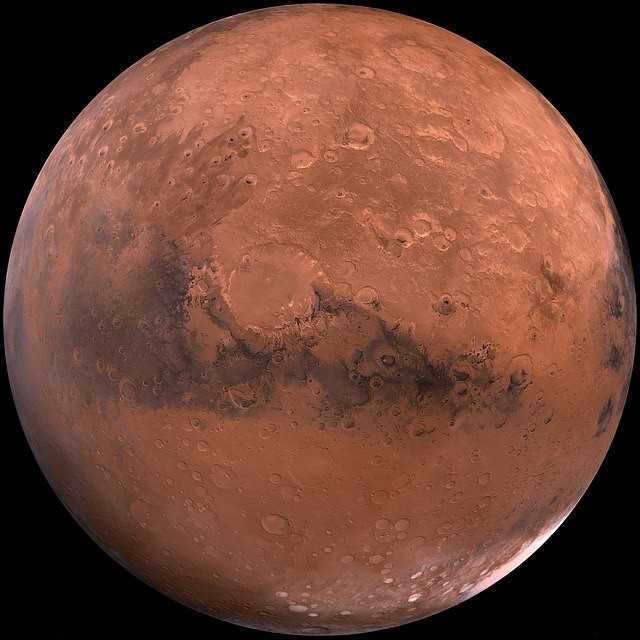
Venus ranks third in terms of distance
Venus measures 6052 kilometers in diameter, making it the second farthest planet from the Sun. It is the only planet in our solar system that is similar in size to Earth and has no moons. The atmosphere of Venus is composed of carbon dioxide and concentrated acids, resulting in extremely high temperatures in its lower layers. Additionally, both Venus and Earth share similar structures. A unique characteristic of Venus is its elongated orbital path and remarkably slow axial rotation.
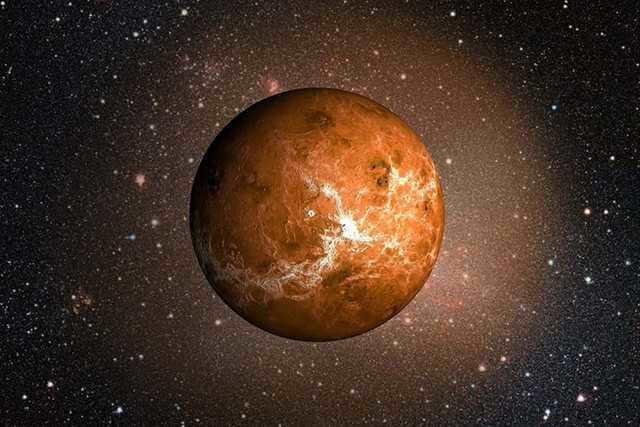
Earth is ranked fourth
The Earth has a diameter of 6371 km. It is the only celestial body known to support life. It has one natural satellite, the Moon. The Earth possesses a dense atmosphere rich in oxygen and displays diverse topography.
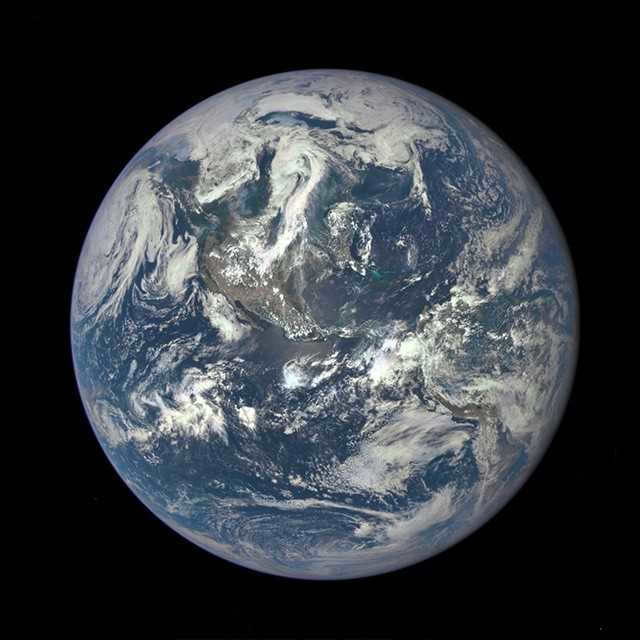
Neptune, the 5th Planet
Neptune has a diameter of 24,622 kilometers. It is the first planet on the list of giants and the farthest among them. Beneath its hydrogen-helium atmosphere, Neptune hides a shell made of hydrocarbon ice. This planet is known for having the fastest and largest hurricanes in our solar system. So far, scientists have discovered 14 satellites and a system of dust rings around Neptune.
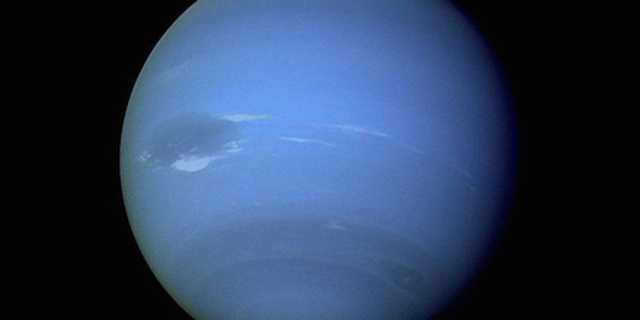
Uranus is ranked sixth in the list of largest planets
Uranus measures 25362 kilometers in diameter and is recognized as the sixth largest planet within the Solar System. In addition, it is also known for being the coldest planet among all celestial bodies in the group. It boasts a highly intricate magnetosphere with magnetic poles that are displaced. One of its most notable features is its retrograde orbital rotation, as well as its significant angle of inclination in relation to its axis, which gives the impression of it “lying on its side”. Uranus is home to a total of 27 known satellites and 13 rings.
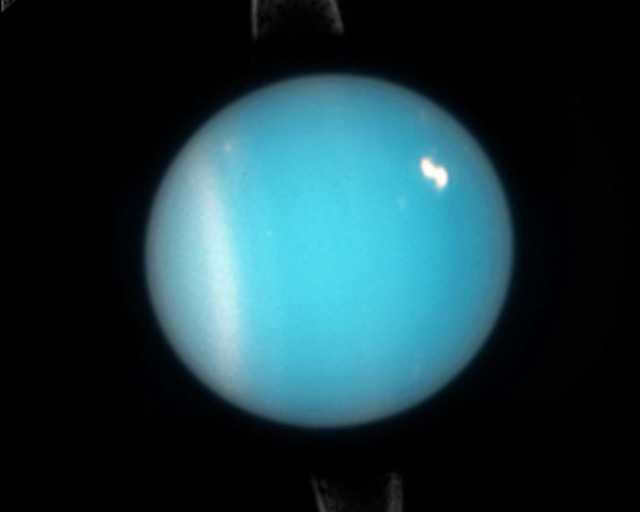
Saturn is the 7th planet in the Solar System
With a diameter of 58233 kilometers, Saturn is the second largest giant in the Solar System. It is known for its impressive system of rings and its collection of over 62 satellites. In fact, Saturn’s diameter is nearly 10 times that of Earth, making it 9.5 times larger to be precise.
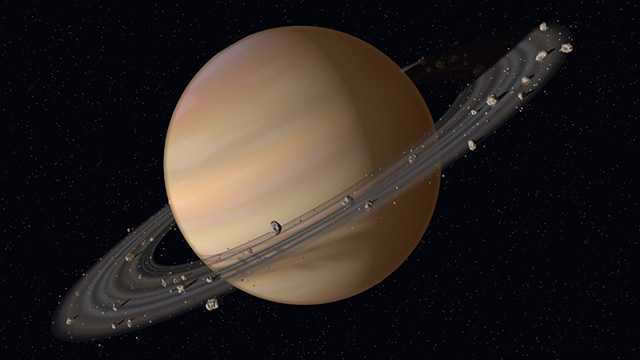
Jupiter is the biggest planet in our solar system
Jupiter has a diameter of 69,912 kilometers, making it the largest planet. In terms of mass, Jupiter is only second to the Sun. It boasts over 80 satellites and a few faint rings. Jupiter also has the most powerful magnetosphere, which has an impact on other celestial objects in the solar system. The planet’s chemical composition is mainly comprised of hydrogen and helium in different states of matter.
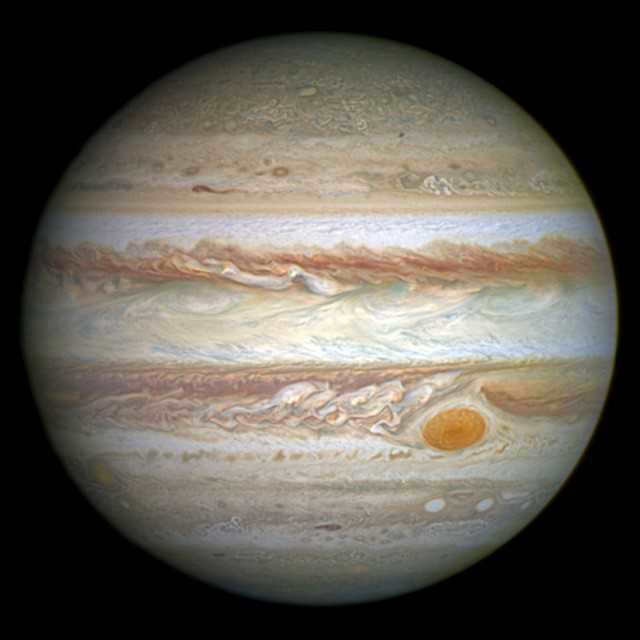
Solar System Overview
Prior to 2006, the prevailing belief was that the solar system consisted of 9 planets. However, during the subsequent International Astronomical Congress, the farthest celestial body, Pluto, was excluded from the official planet list. Scientists reevaluated the criteria and established the following parameters for planets:
- Orbital rotation around a star, specifically the Sun.
- Gravity and a spherical shape.
- Absence of proximity to other large cosmic bodies, excluding their own satellites.
The planets that meet these criteria, listed in order of their distance from the Sun, are as follows:
- Mercury, with a diameter of approximately 4.9 thousand kilometers.
- Venus, with a diameter of approximately 12.1 thousand kilometers.
- Earth, with a diameter of approximately 12.7 thousand kilometers.
- Mars, with a diameter of approximately 6.8 thousand kilometers.
- Jupiter, with a diameter of approximately 139.8 thousand kilometers.
- Saturn. Its diameter is 116.5 thousand kilometers.
- Uranus. Its diameter is 50.7 thousand kilometers.
- Neptune. Its diameter is 49.2 thousand kilometers.
Important note! Scientists were prompted to revise the parameters due to the discovery of another celestial body similar to a planet – Erida, which is actually heavier than Pluto. As a result, both objects were reclassified as dwarf planets.
The origin of planets
What causes the planets to have such distinct characteristics? The answer lies in the circumstances of their formation. The initial quartet of celestial bodies – Mercury, Venus, Earth, and Mars – possess relatively small radii and solid surfaces. They originated from the planetesimals located closest to the Sun. The gases within them evaporated, leaving behind the more heat-resistant metals and rocks that formed these celestial bodies. Furthermore, their growth was stunted by the gravitational pull of the gas giants, which attracted a significant portion of the available “building materials”.
Exoplanet HAT-P-2b
Exoplanets are celestial bodies that orbit around stars, similar to our Sun. In our own solar system, the largest planet in terms of mass is Jupiter. However, when we consider other star systems, we find that there is a different planet with the highest mass. This planet is known as HAT-P-2b, and it was first discovered in the spring of 2007, with the involvement of scientists from Harvard University.
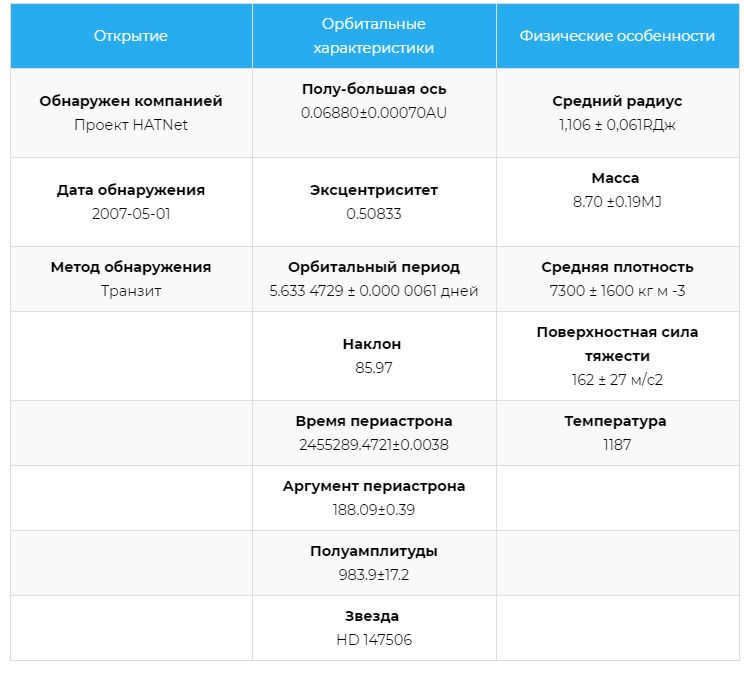
Characteristics of exoplanet HAT-P-2b
Comparison of planets
The following images demonstrate the relative sizes of planets in our solar system. It is evident that Earth is a minuscule celestial entity with a diameter significantly smaller than that of the Sun or Jupiter.
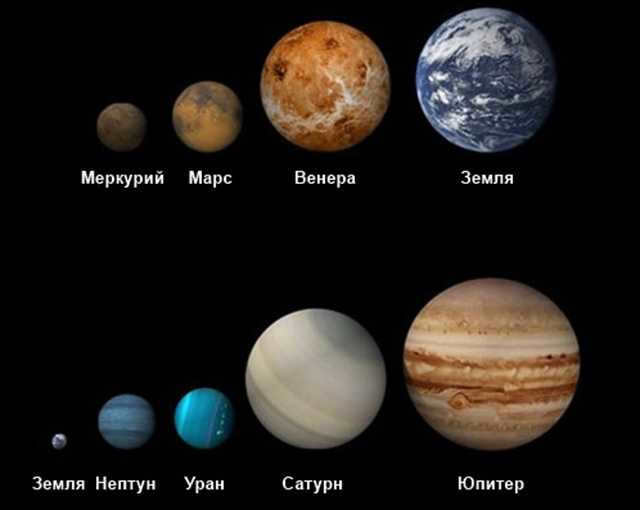
The International Astronomical Union (IAU) is currently in the process of reevaluating various astronomical definitions, which includes the classification of “planet-like objects”. As a result, it is likely that smaller celestial bodies will be included in their official list, leading to a revised ranking system.

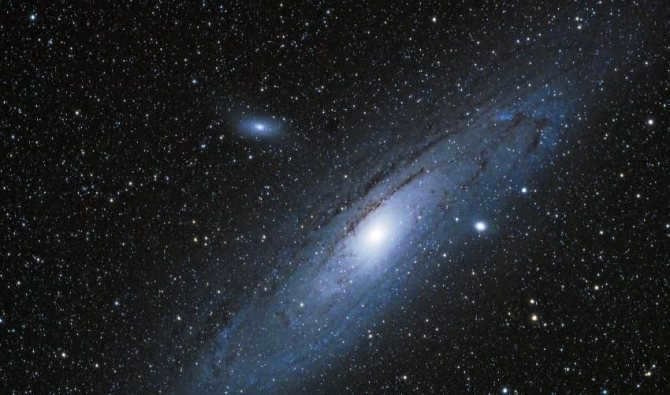
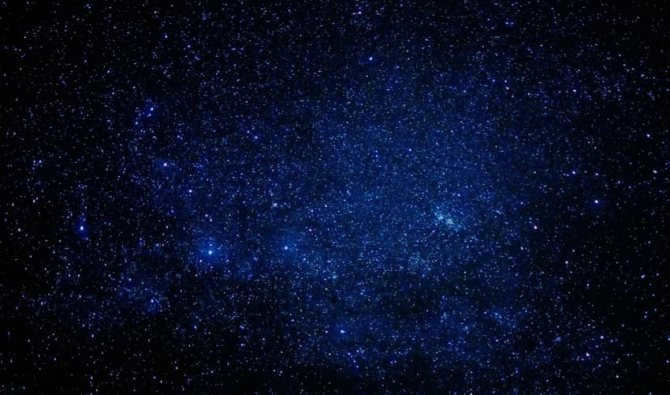
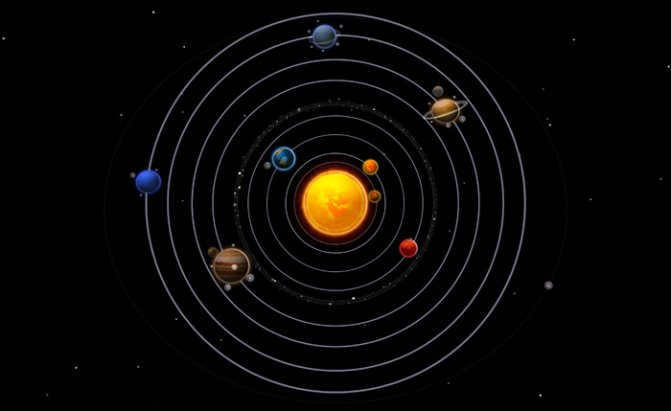
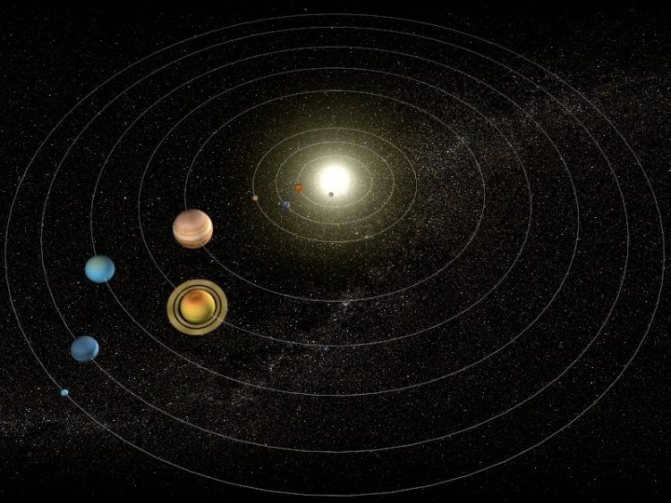
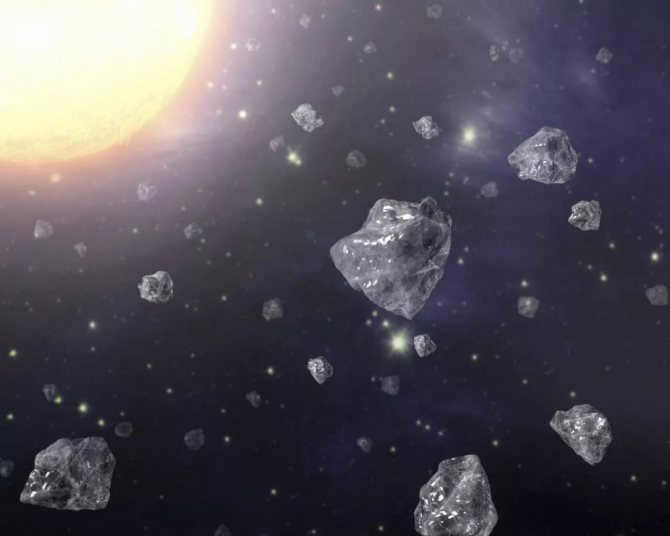
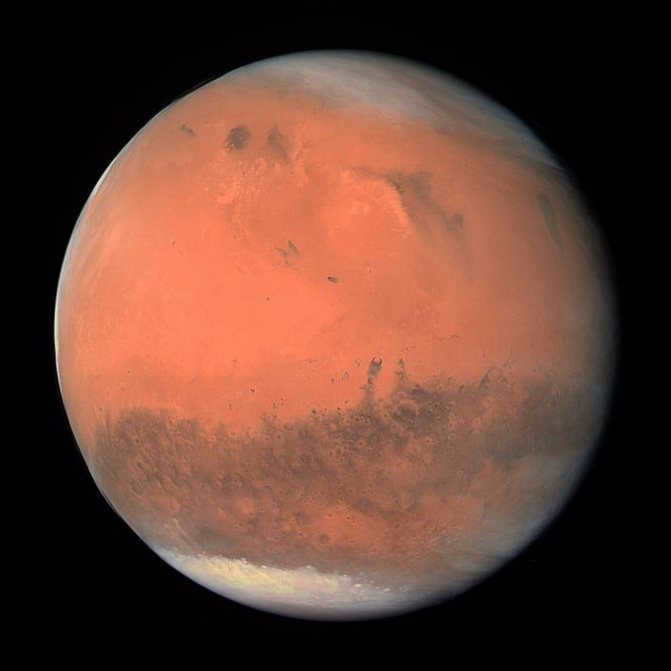
The planets in the solar system are categorized into two sets: terrestrial (inner) and gas (outer). They are demarcated by the asteroid belt. It is conjectured that the belt may have been a failed planet that was unable to coalesce due to the powerful gravitational pull of Jupiter. The terrestrial group comprises planets with a solid crust.
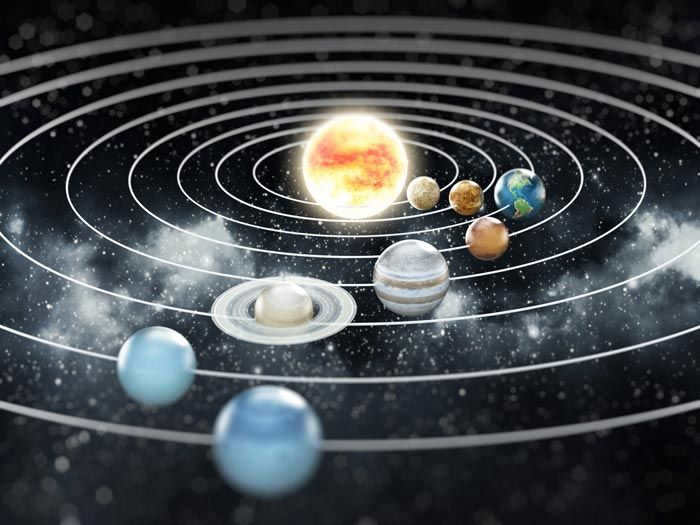
There are a total of 8 planets in our solar system
Mercury is the first planet in the solar system, located closest to the sun. It has the smallest orbit and orbits the sun at a faster speed compared to the other planets. A year on Mercury is equivalent to 88 Earth days. However, Mercury rotates very slowly around its axis. In fact, a day on Mercury is longer than a year and lasts for 4224 Earth hours.
Attention! The movement of the sun in the black sky of Mercury is quite different from that on Earth. Due to the unique rotation and orbit of Mercury, it may appear as if the sun stops, “pivots”, and rises and sets multiple times a day at different points.
Venus is the second planet in our solar system, located after Mercury. It is one of the most fascinating celestial bodies, with its powerful atmosphere composed mostly of carbon dioxide (over 96%). This dense atmosphere has long concealed the surface of Venus from human observation. Unlike Mercury, Venus experiences extreme heat, with temperatures soaring up to +460°C. This intense heat is primarily caused by the greenhouse effect resulting from the atmosphere’s high density. The atmospheric pressure on Venus is a staggering 92 times greater than that of Earth. Below the thick layer of sulfuric acid clouds, Venus is a tumultuous world with constant hurricanes and thunderstorms. These violent weather patterns never cease on this enigmatic planet.
What is the origin of the names of our planets?
Except for Earth, the names of our planets are derived from Greek and Roman mythology.
The five planets that can be easily seen with the naked eye – Mercury, Venus, Mars, Jupiter, and Saturn – were given different names in various cultures.
The Romans named these planets (which means “wanderers” in Greek, referring to their movement across the sky) based on their appearance and behavior.
For instance, Jupiter is named after the supreme deity of the Romans; Venus, the brightest planet, is named after the Roman goddess of love; Mars, with its reddish hue, is named after the god of war. Saturn is named after the god of agriculture.
These names were then adopted in other European languages from the Romans and became the standard names used by astronomers.
Saturn
Saturn, situated at a distance of approximately 1.5 billion kilometers away from the Sun, is a mesmerizing planet renowned for its unique ring system. The planet’s core is surrounded by concentrated gas layers.
With a mass of 5.66 x 10^26 kilograms, Saturn completes one revolution around the Sun in nearly thirty Earth years. Despite its extended year, the planet experiences a relatively short day lasting only eleven hours.
Saturn is accompanied by 53 satellites, although scientists have recently discovered an additional nine satellites that are yet to be confirmed as belonging to Saturn’s moon system.
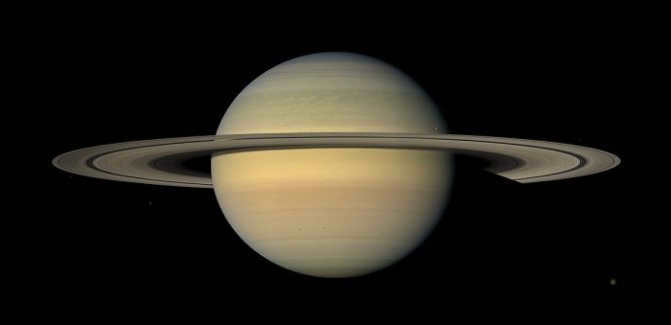
What is the total number of planets?
The exact number of planets in the universe is unknown to scientists. However, in our solar system, there are a total of eight planets: Mercury (the planet closest to the Sun), Venus, Earth, Mars, Jupiter, Saturn, Uranus, and Neptune.
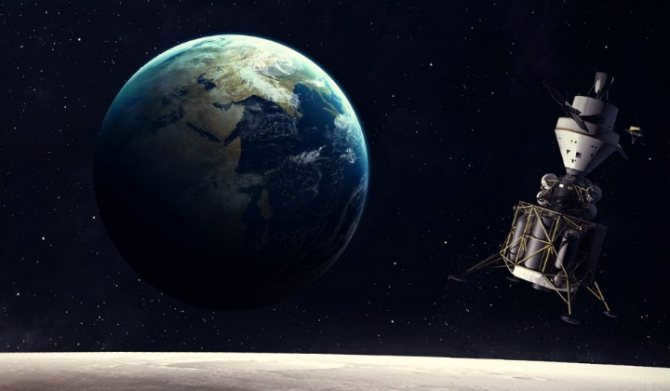
The planets originated from the same groups of celestial dust and gases as the stars. Nonetheless, due to their smaller size, they cooled down at a quicker pace and ceased emitting their own light.
Consequently, we are able to observe them as the planets reflect the light emitted by the sun and stars.
Fact 6: Jupiter’s role in protecting Earth.
Jupiter, the largest planet in our solar system, had the potential to become a star but fortunately, it didn’t. Instead, it plays a vital role in safeguarding our planet. With its immense gravity, Jupiter acts as a shield, attracting asteroids and other dangerous celestial objects that could potentially harm Earth. By doing so, it prevents these objects from colliding with our planet and causing widespread destruction. Instead, they crash into Jupiter, where they dissipate in its ocean of hydrogen. This symbiotic relationship between Earth and Jupiter has been demonstrated several times. In 1994, Jupiter absorbed the impact of the Shoemaker-Levy comet, and in both 2009 and 2012, it collided with large asteroids. The resulting atmospheric flashes from these collisions, including one witnessed by amateur astronomer George Hall, were comparable in size to our own planet.
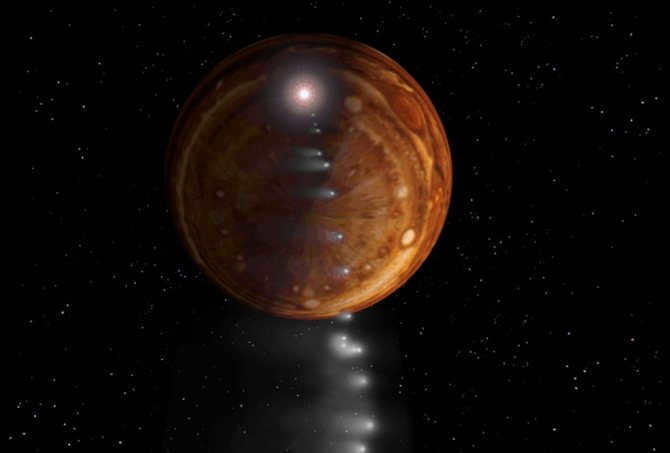
Jupiter and fragments of comets
Fact 3: The biggest sea
The biggest sea can be found on Jupiter. Unexpected, isn’t it? Furthermore, it is an extraordinary waterless sea – Jupiter lacks water. It is a giant gas planet, primarily composed of hydrogen and helium. As one approaches the planet’s core, the pressure increases, causing hydrogen to transition into a liquid state. Consequently, scientific calculations suggest that beneath Jupiter’s cloud layers lies a 40,000-kilometer-deep ocean of liquid hydrogen!
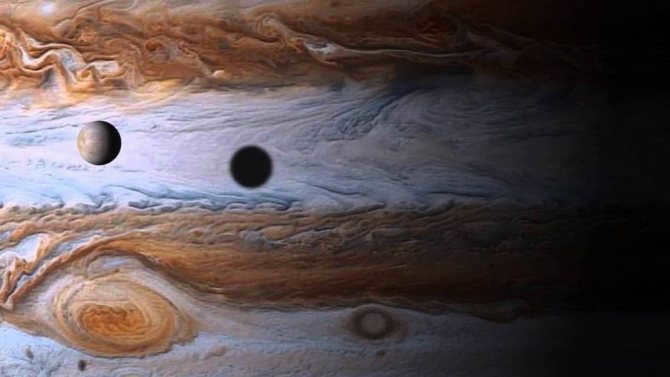
Jupiter and one of its satellites
Fact 1: Mercury is not the hottest planet in the universe.
While you can easily get fried there in a matter of moments, Venus takes the crown for the hottest planet. Despite being the closest planet to the Sun, Mercury lacks a significant atmosphere due to its weak gravity. As a result, it is constantly being blown away by the solar wind. On the other hand, Venus has the densest atmosphere of all the planets, which creates a “greenhouse effect” and covers the planet’s surface. This leads to a scorching maximum temperature of 475 degrees Celsius on Venus, whereas Mercury can only boast a temperature of 450 degrees. However, the temperature contrast between the sunlit and shadowed sides of Mercury is truly remarkable. It ranges from a chilling -180 degrees in the shade to a sweltering +450 degrees in the sun.
